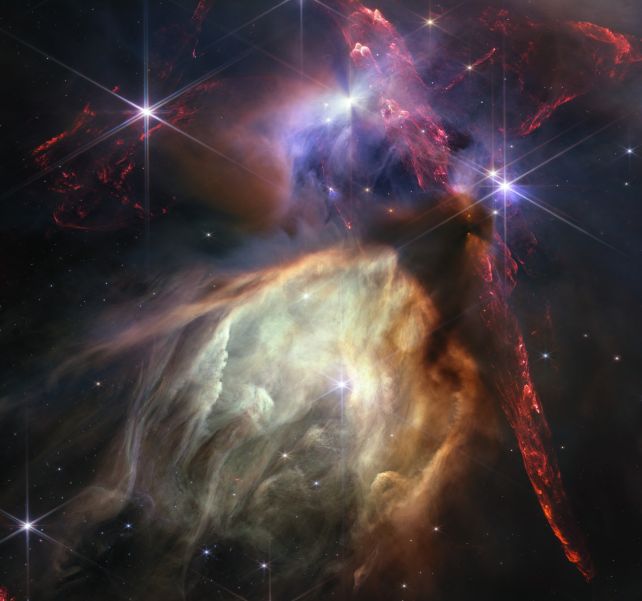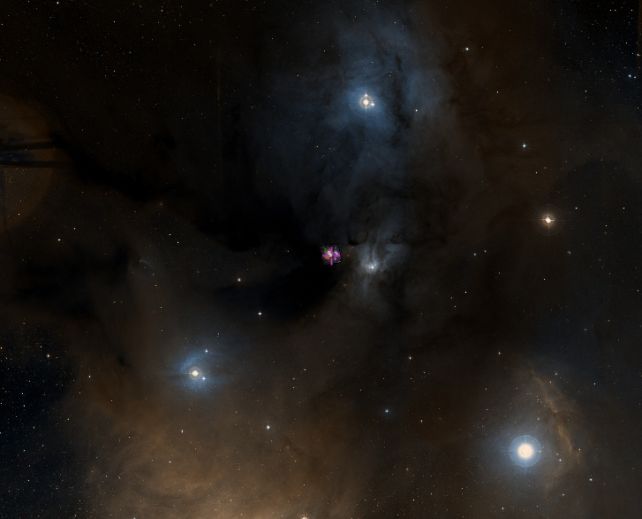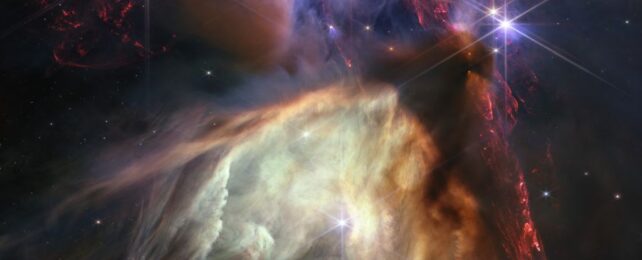A glittering treasure trove of baby stars hidden in the thick dust of their nursery is revealed in a stunning new image from the James Webb Space Telescope.
To celebrate its first successful year of operations, the JWST has turned its honeycomb eye to the Rho Ophiuchi cloud complex some 390 light-years away, peering through the thick shroud to the bright star formation occurring therein.
It's one of the things at which the telescope truly excels, its infrared vision detecting the long wavelengths of light that can travel through dust clouds to show us sights the human eye could never see unaided.
"Webb's image of Rho Ophiuchi allows us to witness a very brief period in the stellar lifecycle with new clarity," says astronomer Klaus Pontoppidan of the Space Telescope Science Institute.
"Our own Sun experienced a phase like this, long ago, and now we have the technology to see the beginning of another's star's story."

Although the Milky Way is not particularly bursting with star formation – it churns out up to a relatively lazy 8 solar masses' worth of new stars per year – there's life in the old thing yet. Regions where stars form are called stellar nurseries, and historically they have been pretty difficult to study. That's because stars are born from dense clumps in clouds of dust and gas that accumulate enough mass to create the core pressure and heat required to ignite fusion.
All that dust and gas prevents most wavelengths of light from emerging, forcing them to scatter from the mix of particles in the cloud. Infrared light is the exception; and, as the most powerful infrared telescope ever built, the JWST is helping demystify the star formation process.
You can see how dense and impenetrable these clouds can be in an optical image of the Rho Ophiuchi cloud complex compiled from Digitized Sky Survey 2 data. By comparison, the JWST image reveals a dynamic, complicated region of space, glowing brightly with infrared light as jets from newborn stars punch into the dust, carving out space.

The new image shows a region in which 50 stars, the size of the Sun or smaller, can be found.
"The darkest areas are the densest, where thick dust cocoons still-forming protostars. Huge red bipolar jets of molecular hydrogen dominate the image, appearing horizontally across the upper third and vertically on the right," explains the ESA in a statement.
"These occur when a star first bursts through its natal envelope of cosmic dust, shooting out a pair of opposing jets into space. In contrast, the star S1 has carved out a glowing cave of dust in the lower half of the image. It is the only star in the image that is significantly more massive than the Sun."

Already, the JWST has changed the way we see the Universe. From our own Solar System, to the broader Milky Way galaxy and beyond, to the very farthest reaches of space and time, there's never been a better time to be excited about the sky.
You can download wallpaper-sized versions of the new image on the ESA website.
